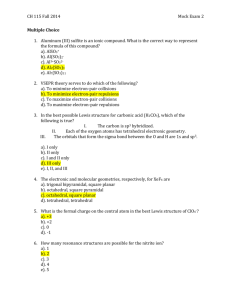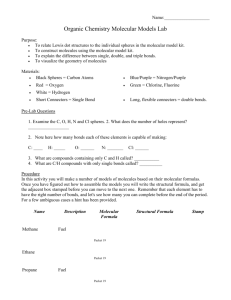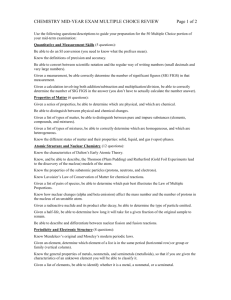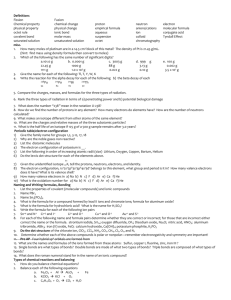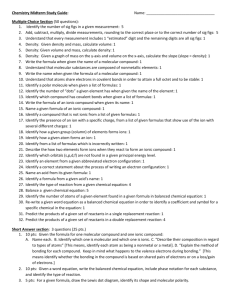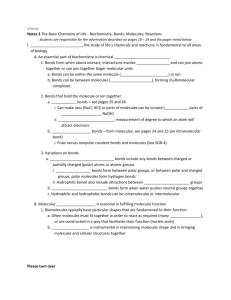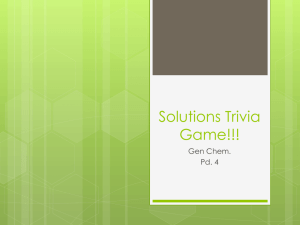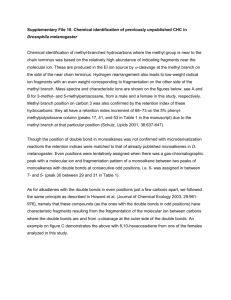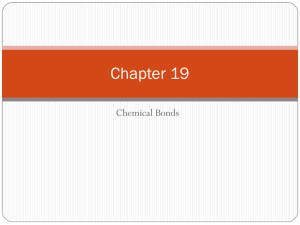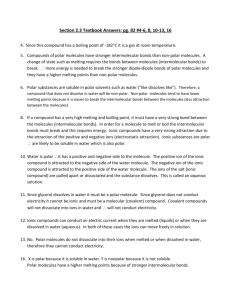Lesson 4: Aim and Objectives
advertisement
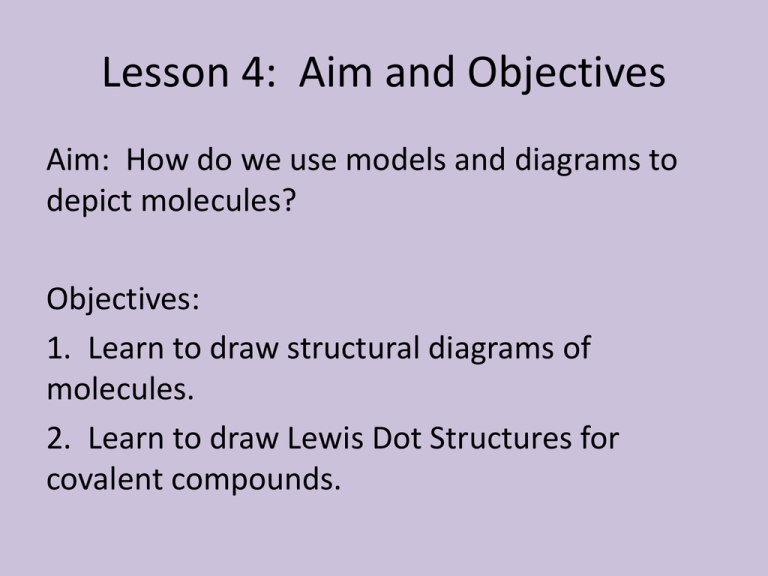
Lesson 4: Aim and Objectives Aim: How do we use models and diagrams to depict molecules? Objectives: 1. Learn to draw structural diagrams of molecules. 2. Learn to draw Lewis Dot Structures for covalent compounds. Modeling Molecules Ball-and-Stick Molecular Models 1. What shape structure would be the best to represent an atom? 2. How can we depict bonds between atoms? 3. How can the model show the number of bonds each atom can make? 4. How can you depict a double bond between two atoms? 5. Given the elements H, C, O, S, N, P, Cl, Br; which balls in the model kit could be used to represent them? Molecule Shapes Match the following names to the structure: -linear -bent -tetrahedral -pyramidal Molecular Model Activity 1. Get in your element groups. 2. Use the model kit to make the molecules on the lab sheet. 3. Complete the chart. You will be given additional time to complete this in lab. Regents Question Warm-Up 1. When lithium reacts with bromine to form the compound LiBr, each lithium atom (1) gains one electron and becomes a negatively charged ion (2) gains three electrons and becomes a negatively charged ion (3) loses one electron and becomes a positively charged ion (4) loses three electrons and becomes a positively charged ion 2. Given the balanced equation representing a reaction: N2 + energy → N + N Which statement describes this reaction? (1) Bonds are broken, and the reaction is endothermic. (2) Bonds are broken, and the reaction is exothermic. (3) Bonds are formed, and the reaction is endothermic. (4) Bonds are formed, and the reaction is exothermic. 3. Which formulas represent one ionic compound and one molecular compound? (1) N2 and SO2 (2) BaCl2 and N2O4 (3) Cl2 and H2S (4) NaOH and BaSO4 Regents Question Warm-Up 1. A sample of a substance has these characteristics: – – – – melting point of 984 K hard, brittle solid at room temperature poor conductor of heat and electricity as a solid good conductor of electricity as a liquid or in an aqueous solution This sample is classified as (1) a metallic element (2) a molecular compound (3) a radioactive element (4) an ionic compound 2. Given the formula for hydrazine: How many pairs of electrons are shared between the two nitrogen atoms? (1) 1 (2) 2 (3) 3 (4) 4 3. Which of the following types of substances would have covalent bonds? There may be more than one correct answer. a) molecular solid c) ionic solid b) metallic solid d) network solid Homework 4 Workbook: Pg. 99-111 1-44 Booyah! (Don’t wanna hear it…you have three days to do it!)
